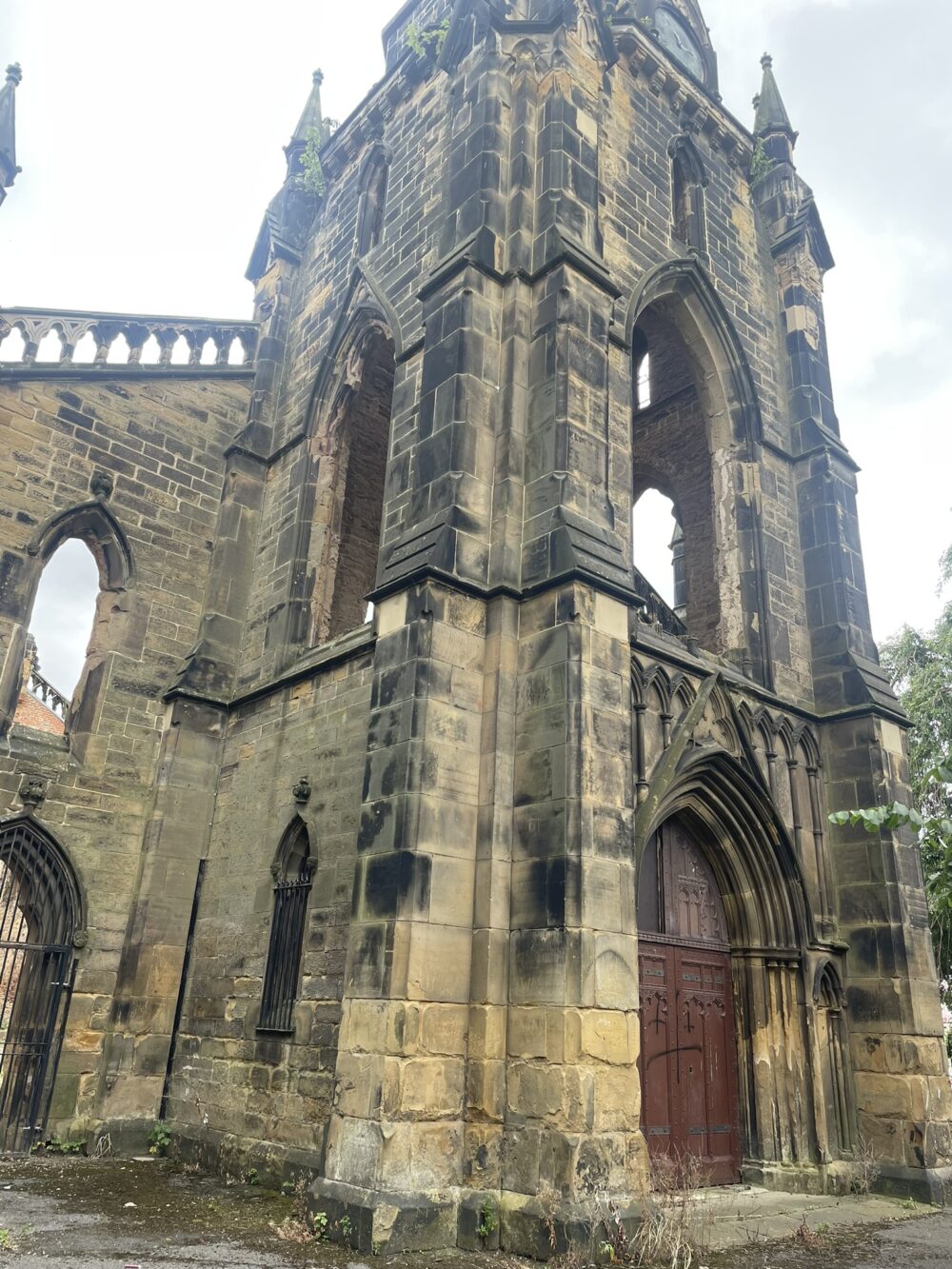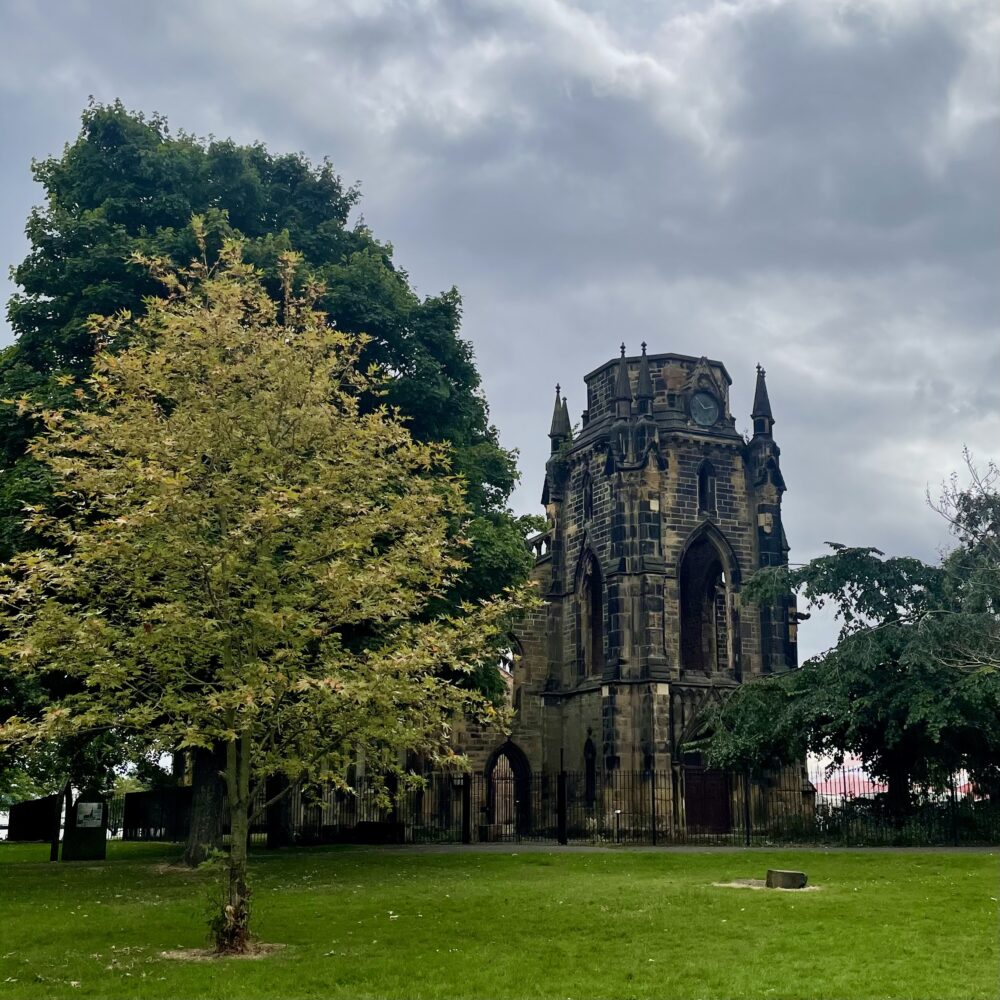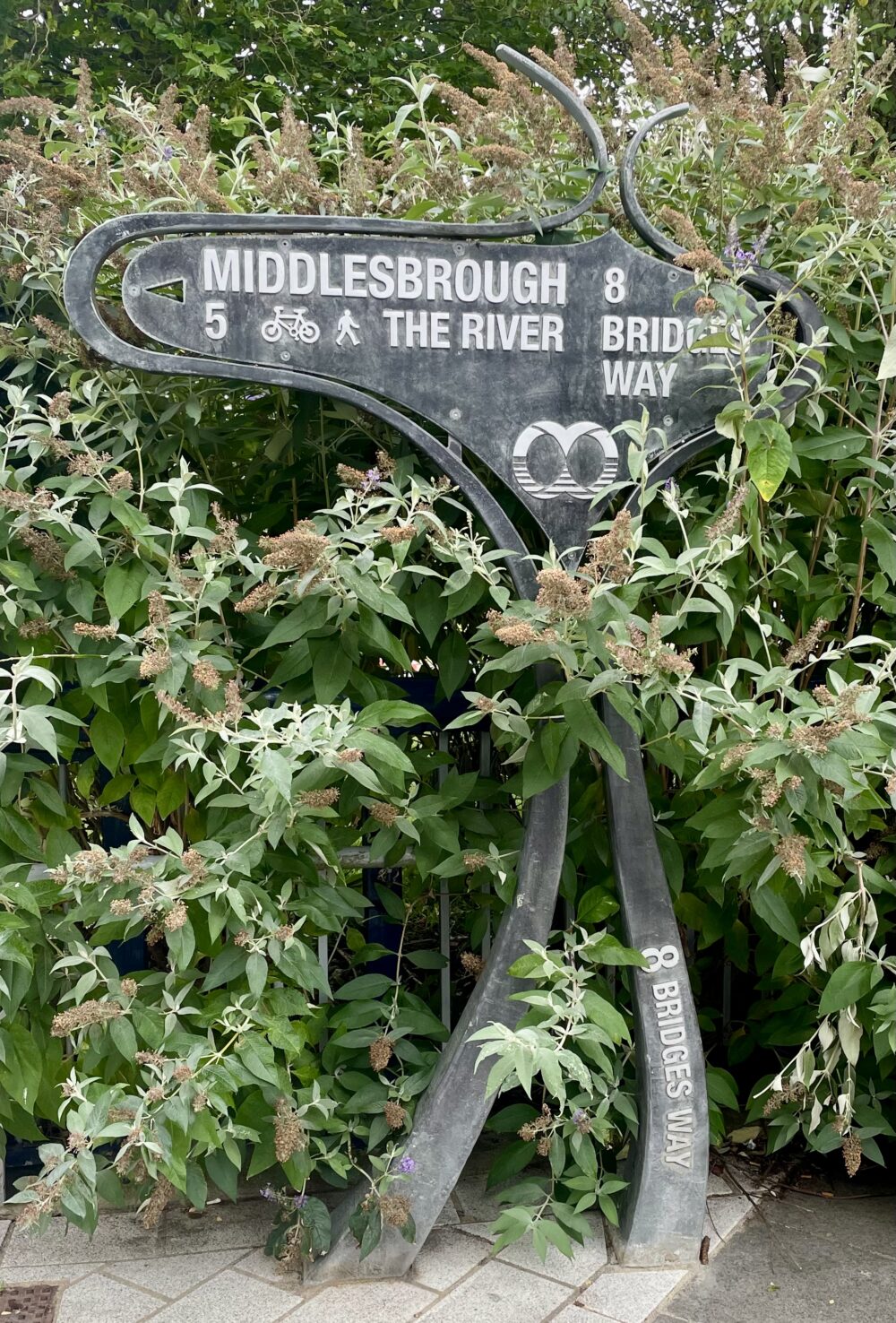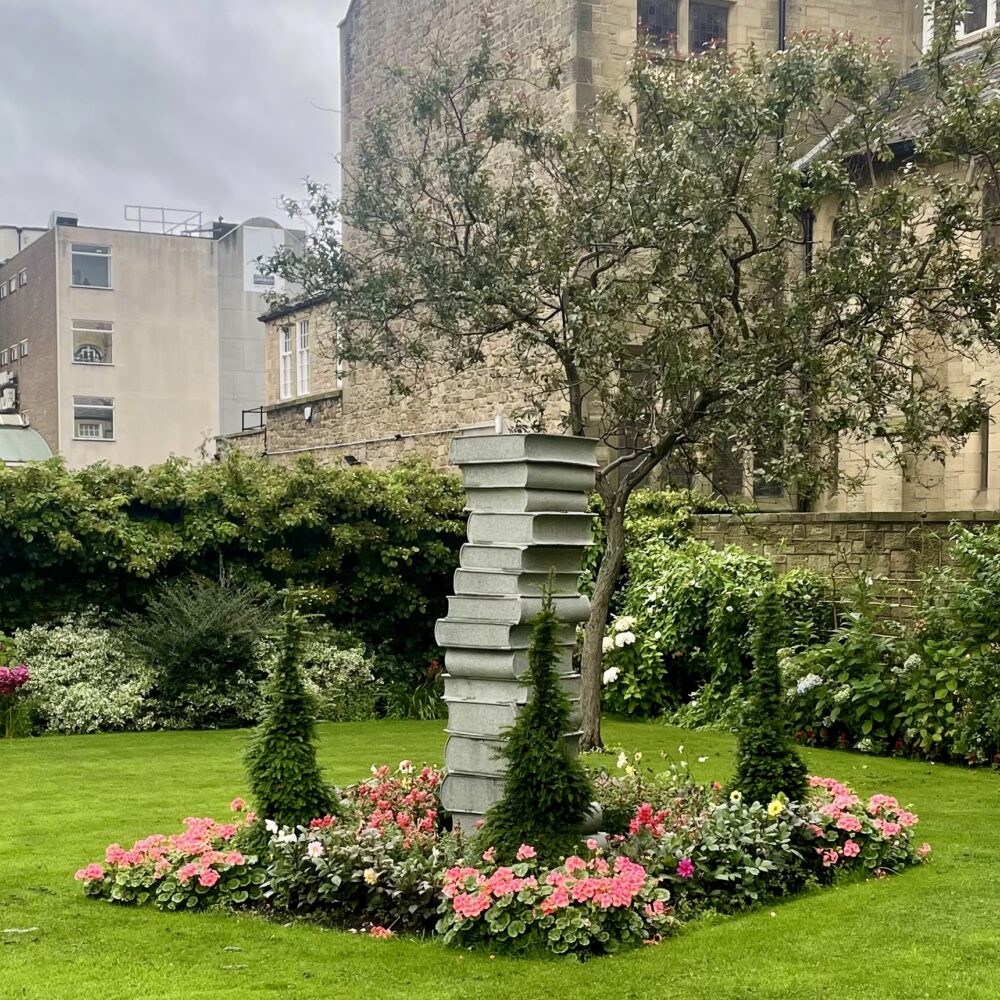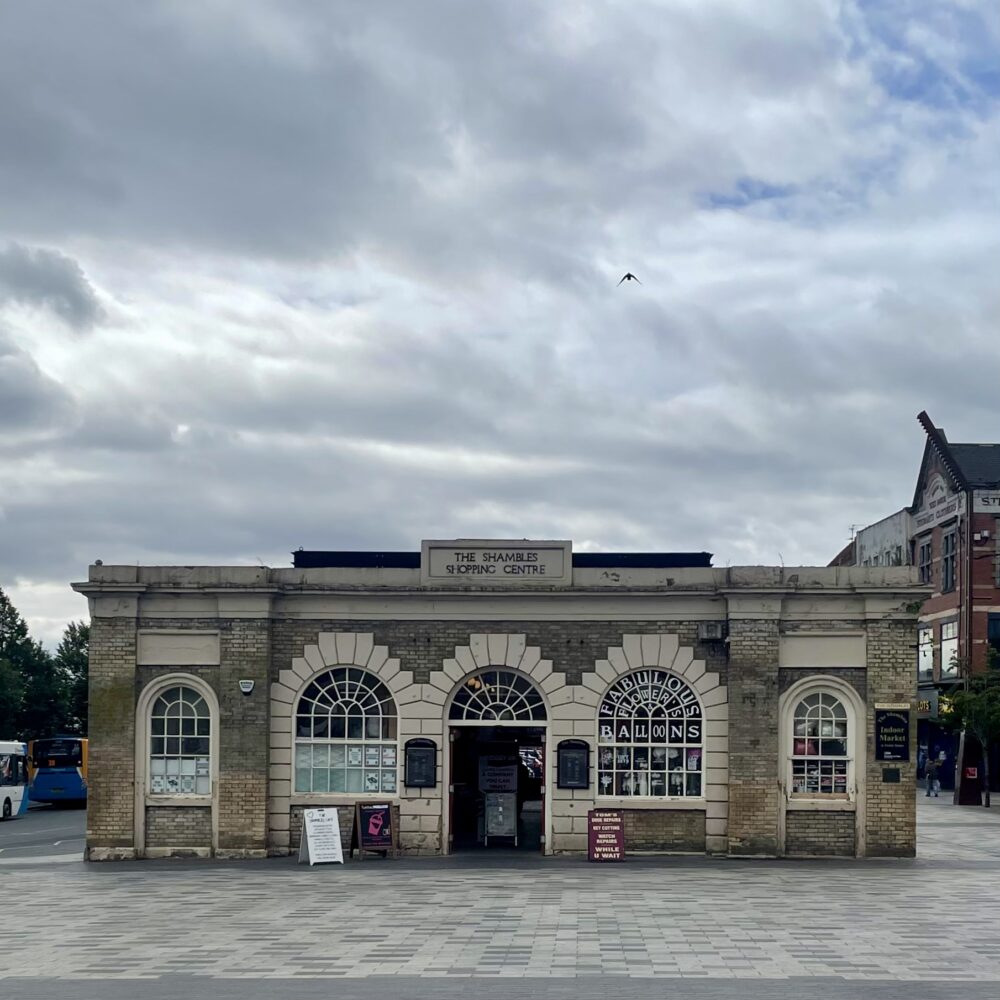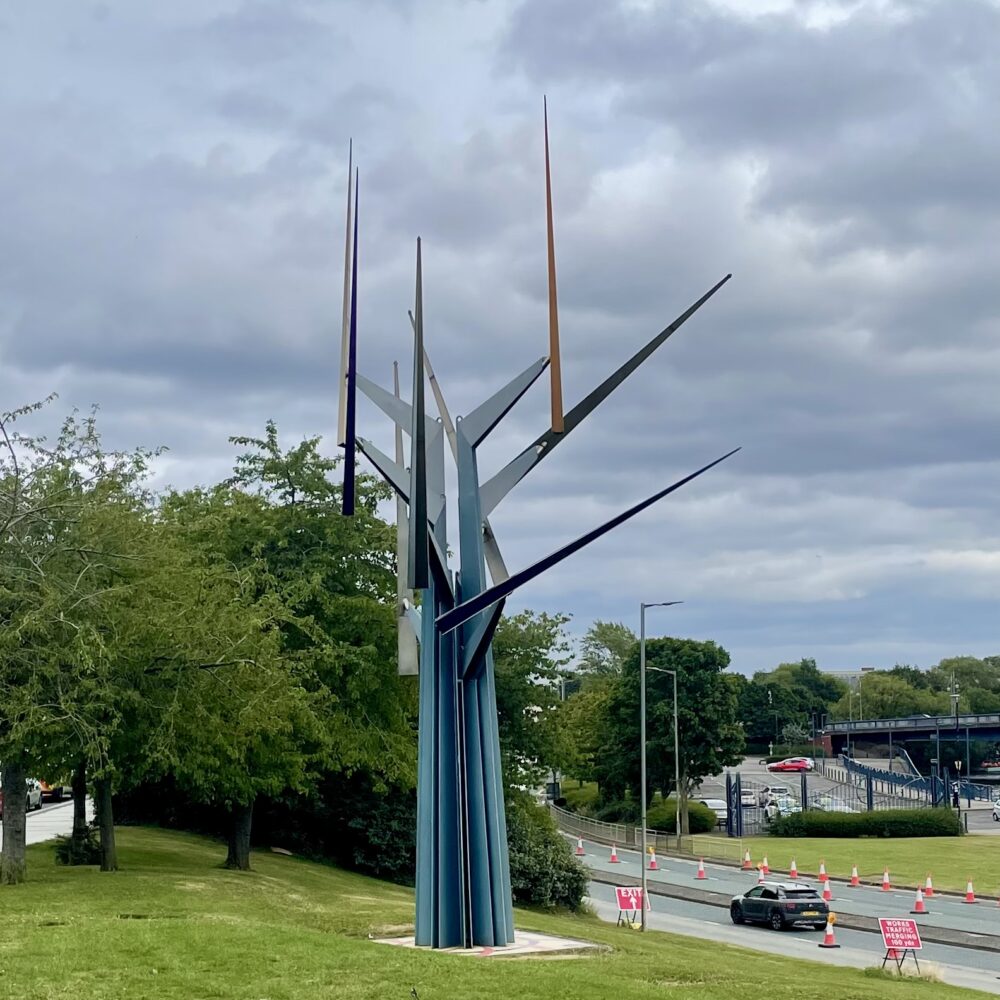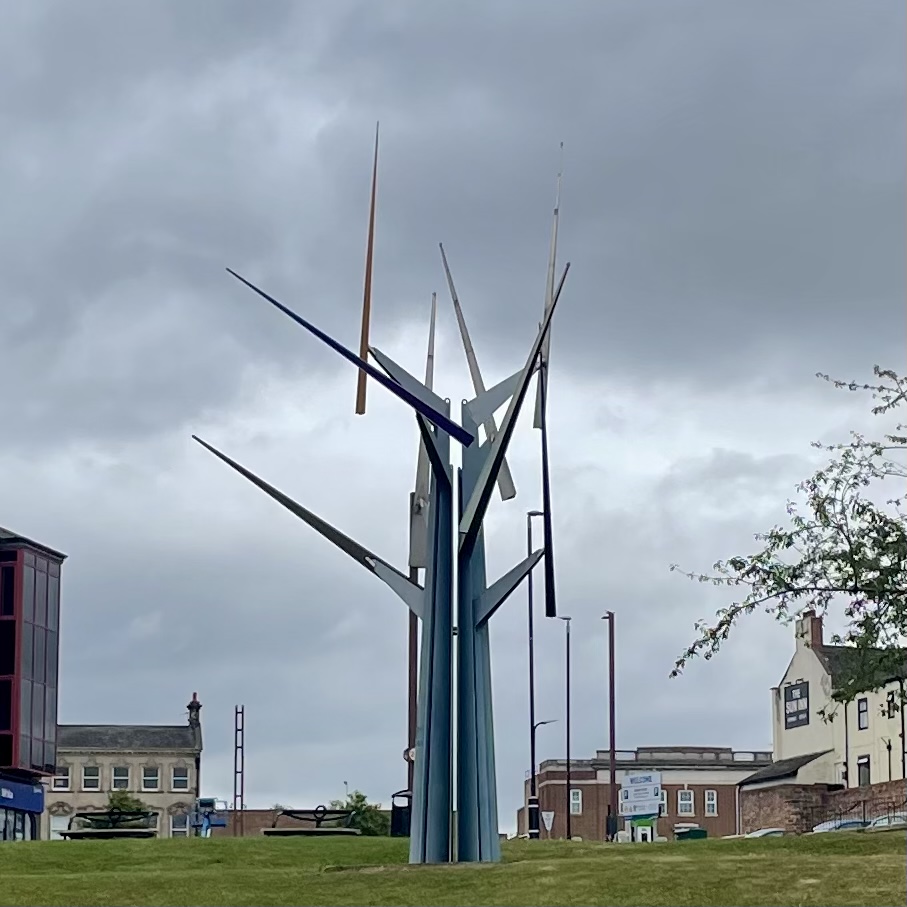St George’s Chapel

Good Lord, it’s the second post about a church in a row, I’ll need to hand this blog over to my brother if I’m not careful. Today’s visit is to St George’s Chapel, hidden away at what was once the centre of the Heathrow Airport site.
I’ve long known this existed, but I’d never visited. I’ve recently been reading Flying Blind by Peter Robison, and its mention of memorials to those killed in plane crashes spurred me to call in.

Except, one can’t call in. The church itself is open only for services. Opened in 1968, it was designed by Sir Frederick Gibberd, who more famously designed Liverpool Metropolitan Cathedral and the Ulster Hospital. It is in a cave dug beneath Heathrow, stylistically similar to a crypt, the better to provide sound insulation from the noise above.
St George’s was designed with three apses, so that the Anglican, Catholic and Free Churches didn’t have to share. In the 1970s, the churches perhaps realised how petty and, dare I say it, unchristian that seemed, and so the Archbishop of Canterbury, the Cardinal Archbishop of Westminster, and the Moderator of the Free Church Federal Council banded together and rededicated one of the apses for shared used. They allowed the other two to be dedicated to use by non-Abrahamic religions, in a show of multi-faith… who am I kidding, this was the 1970s, of course they didn’t. They plonked a Bible in one of them, a font in the other, and carried on just as they were. Other faiths weren’t catered for until 1998, when a separate ground-floor multifaith prayer room was opened.
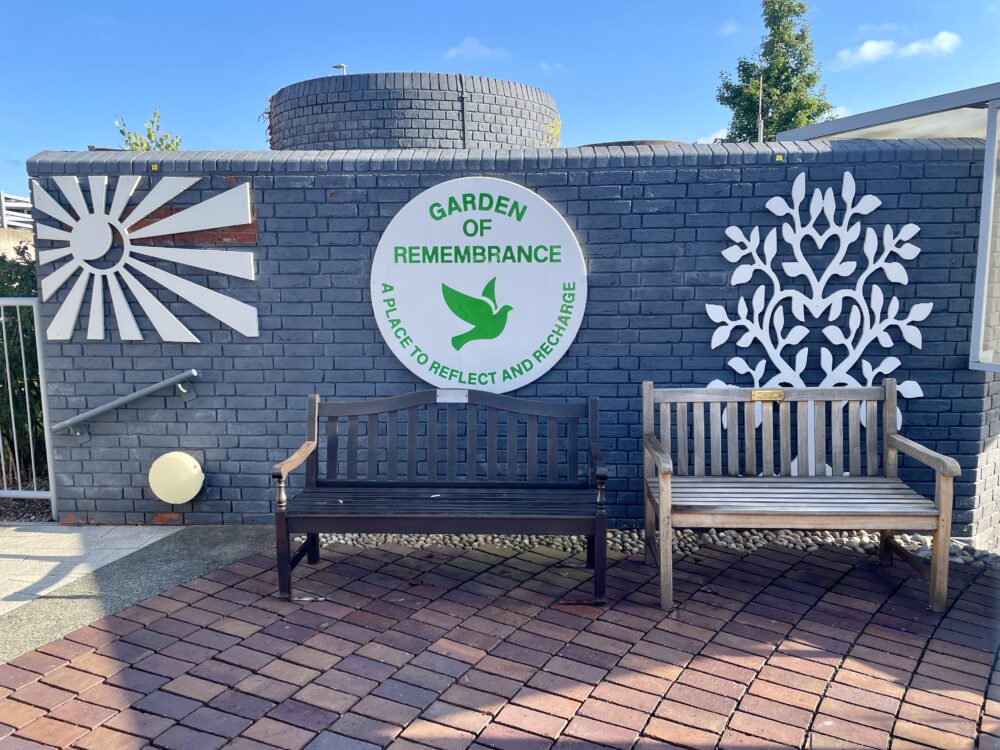
I couldn’t see any of this because the door was locked: as best as I can tell, it only opens at lunchtime four times per week these days, all of them for Catholic services. There was an A4 notice posted on the door with a number to call for urgent chaplaincy assistance… which was the same number one is advised to call if there is any ‘inappropriate behaviour’ in the vicinity. I’m not sure whether the chaplain prays for divine intervention in unruly behaviour or whether the security guard comes down to take your confession.
I’m being snippier than I mean to be. You can be as atheist as me and still think that the Garden of Remembrance is quite lovely. The 16-foot oak cross is arresting, and the many and varied memorial plaques are moving. The enclosed nature of the garden makes it a surprisingly peaceful and quiet place to sit and contemplate.
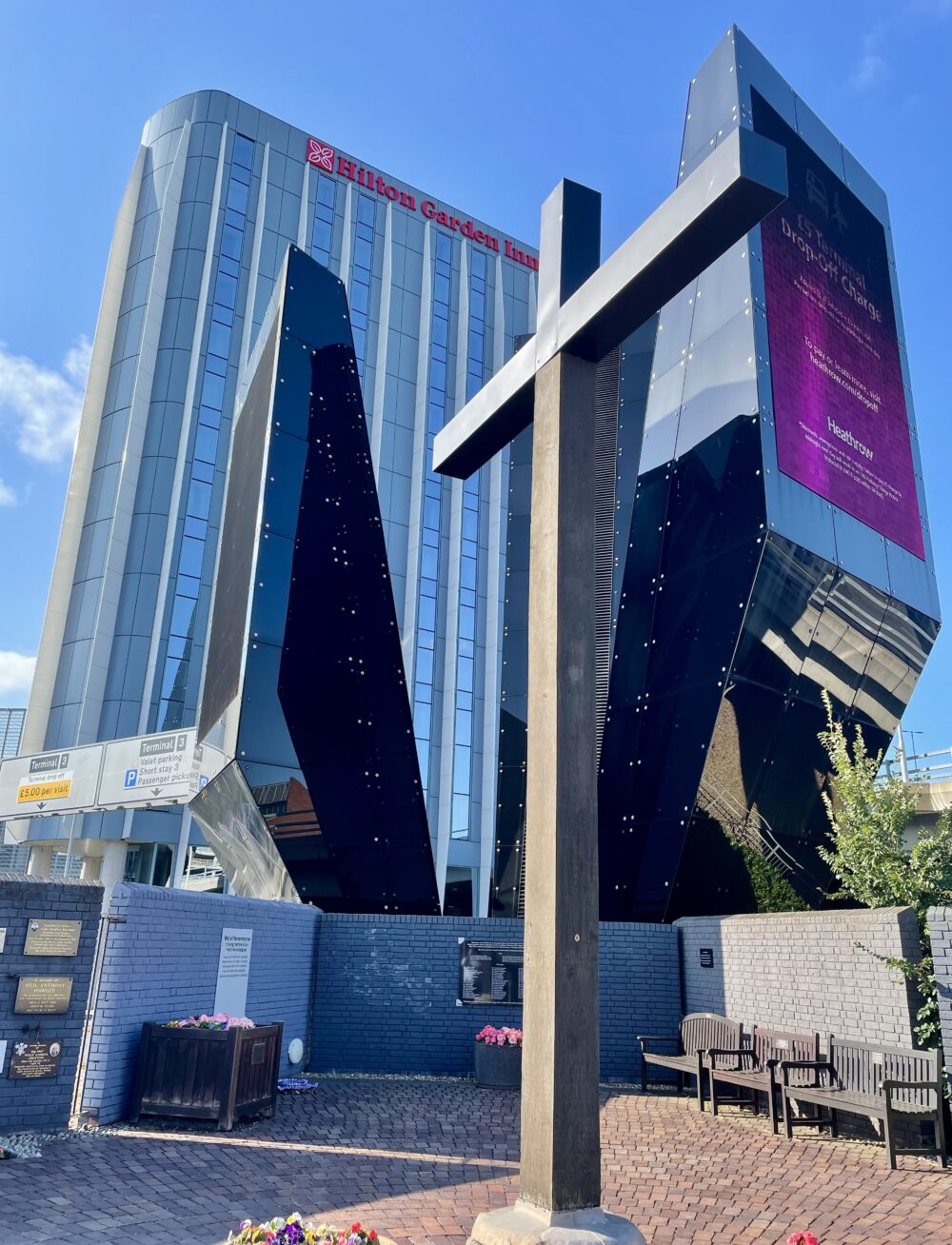
There is something genuinely delightful about the fact that Heathrow has protected this space while everything around it has changed. It’s a glorious bit of human-focused inefficiency, a rare place in an airport where one can sit in peace without being expected to handover cash.
Long may it continue.
This post was filed under: Photos, Travel, Churches, Frederick Gibberd, Heathrow.
